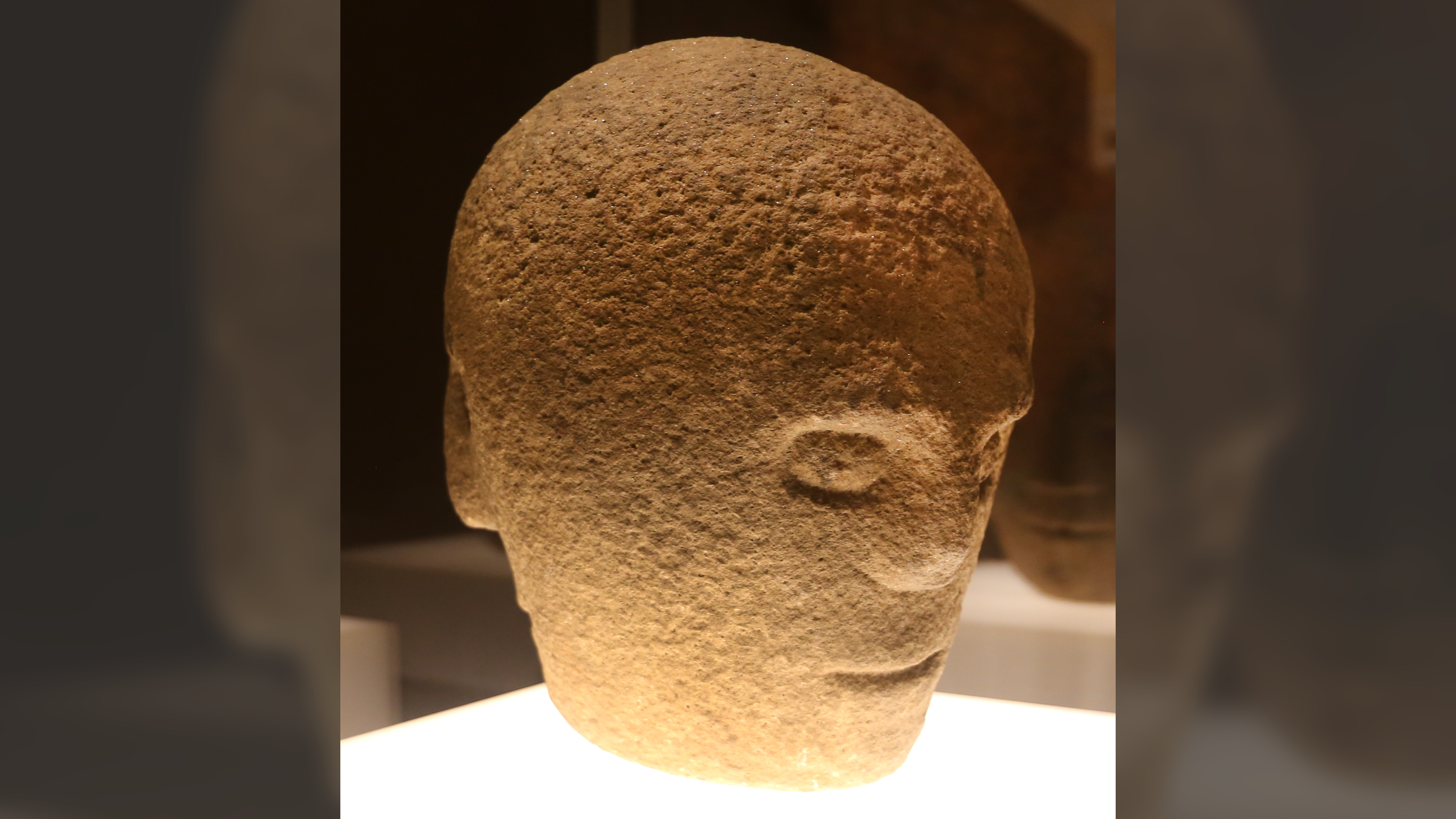Corleck Head: A spooky three-faced Celtic sculpture found on the 'Hill of Death' in Ireland — and it may have been connected to human sacrifice 1,900 years ago
The meaning of the three-faced Corleck Head has puzzled experts for centuries.

Name: Corleck Head
What it is: A three-faced sandstone sculpture
Where it is from: County Cavan, Ireland
When it was made: First century
This carved stone head was discovered in 1855 in the Irish town of Drumeague, about 60 miles (100 kilometers) northwest of Dublin. The three-faced (also called tricephalic or janiform) head was likely created by the Celts in the first century in celebration of a pagan ritual.
According to the National Museum of Ireland, where the sculpture is housed, the Corleck Head is 13 inches (33 centimeters) tall and the "finest of its type." The faces have heavy brows, a broad nose and a slit-like mouth, and one mouth has a small hole in the center. The bottom of the head also contains a small hole, possibly to secure it to a pedestal.
In a 1960 study of tricephalic stone heads, archaeologist Anne Ross wrote that the "cult of the head" was a deep-rooted tradition in Celtic society connected to the concepts of divinity and supernatural power. The idea of the cult originated with ancient Greek historian Diodorus Siculus, who wrote in the first century B.C. that the Celts were fond of cutting off their enemies' heads and displaying them fastened to the necks of their horses.
But the exact meaning of the Corleck Head continues to be debated.
In a 2023 lecture, historian Jonathan Smyth laid out several possible meanings for the enigmatic sculpture. It may have been a representation of the Celtic god Lugh, displayed on a pillar as a phallic symbol of fertility. Lugh was a master craftsman, and the three faces may represent different technologies. This attribution would suggest that the Corleck Head was used in Lughnasa, the Celtic harvest festival.
According to Smyth, the Corleck Head may have even signaled the opposite: destruction. Drumeague, where the object was found, can be translated from Irish as the "Hill of Death," and the body of a sacrificed Iron Age man was discovered nearby. The man, like other bog bodies, had been killed in three ways: strangled, bludgeoned and slashed through the throat.
Regardless of whether the Corleck Head was associated with human sacrifice, archaeologists think medieval Irish people believed the pagan sculpture was cursed and, therefore, buried it sometime between the 10th and 13th centuries to suppress early Celtic religious traditions.
Get the world’s most fascinating discoveries delivered straight to your inbox.
For more stunning archaeological discoveries, check out our Astonishing Artifacts archives.

Kristina Killgrove is a staff writer at Live Science with a focus on archaeology and paleoanthropology news. Her articles have also appeared in venues such as Forbes, Smithsonian, and Mental Floss. Kristina holds a Ph.D. in biological anthropology and an M.A. in classical archaeology from the University of North Carolina, as well as a B.A. in Latin from the University of Virginia, and she was formerly a university professor and researcher. She has received awards from the Society for American Archaeology and the American Anthropological Association for her science writing.
You must confirm your public display name before commenting
Please logout and then login again, you will then be prompted to enter your display name.
